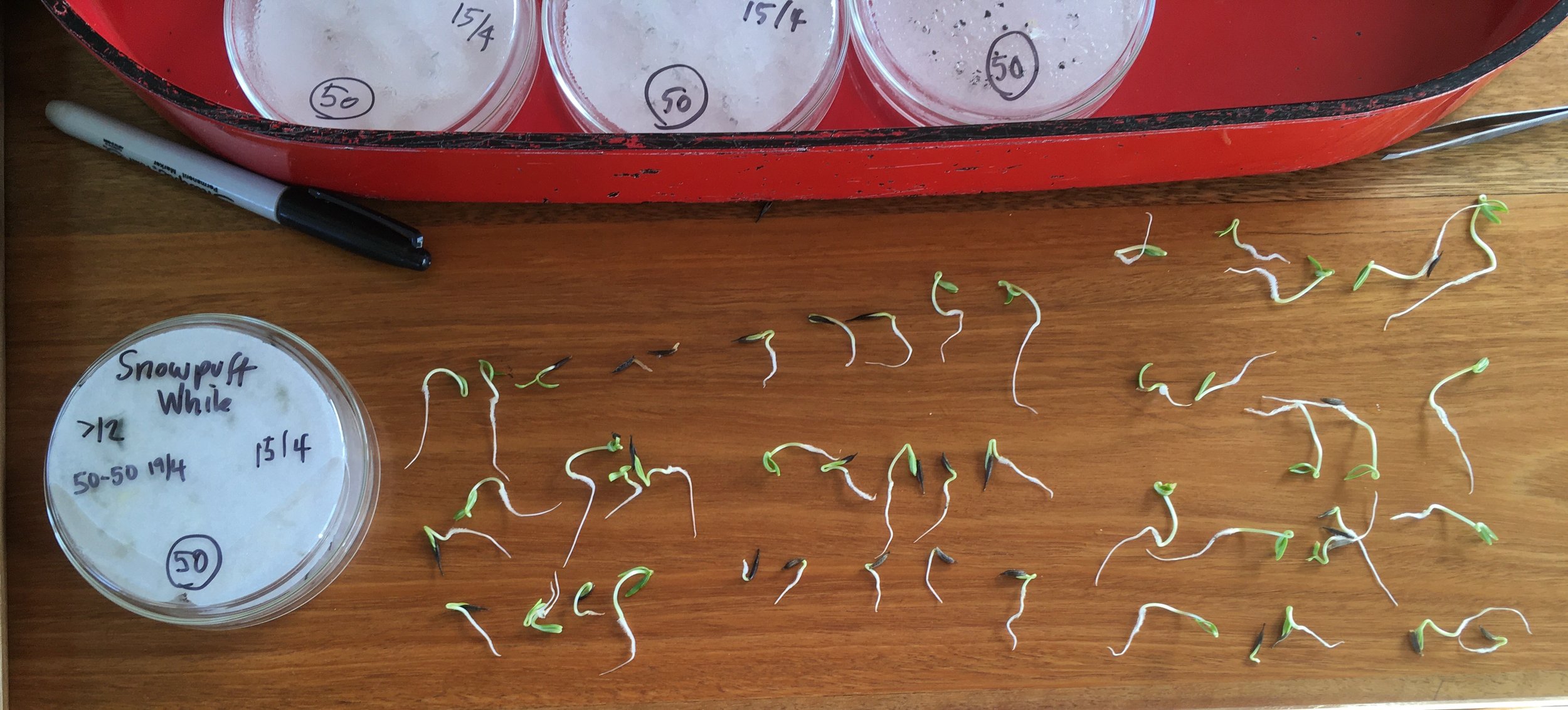How To Test The Vitability Of Your Seeds
/Winter is a great time to pull out your seed stash and test the viability of your seed. Running germination tests not only ensures you do not waste time, energy, space and resources sowing seed that is no longer good, it also keeps your planting schedule on track.
WHEN TO TEST SEED
If you have seed that you are hoping to carry over from last season, it is always a good idea to sacrifice a few to a germination test.
If you stored your seed correctly, you may be able to rely on the germination test on the packet BUT as soon as seed is opened or the temperature fluctuated where the seed was stored, the seed life can be adversely effected.
As space and scheduling were incredibly important to us as market growers, we chose to follow a simple rule, “WHEN IN DOUBT, TEST IT!”
SIMPLE AND QUICK GERMINATION TEST
One of the simplest ways to test germination is using a paper towel, blotter paper or a coffee filter.
Use a double thickness paper towel, blotter paper or coffee filter
Label it or a piece of masking tape attached to it with the variety and/or lot number
Lay a selection of the seed on the paper towel
Gently mist so that the paper towel and seed is thoroughly moist but not dripping wet
If the variety requires light to germinate, place it into a clear takeaway container and cover with the clear lid to maintain humidity
If the seed requires darkness for germination, cover with another moistened paper towel and roll into a sausage or cover with a bowl. Place into a plastic bag to maintain humidity but do not completely seal as the seeds do require oxygen
Place in a position where the optimum germination temperature for that seed is achieved. This could be in a cool room in your house or above your refrigerator or on a sunny window sill
Check seeds every day or two for moisture. Ensure paper towel stays moist throughout the entire time it takes to achieve your results - this is especially important if you have placed you seed somewhere warm or in direct sunlight
A very average temperature of 22C should yield results on most things from 3-10 days. Many seed packets will list the optimum germination temperature
Calculating the germination rate
You are looking for roots and shoots! You can count and remove those seeds that have germinated and continue your test. Make sure you write down your results though. Once you have no new seed germinating after a few days, you can calculate your rate
(Number of seeds sprouted X 100) / Total number of seeds tested = Germination rate %
IE - Started with 25 seeds
23 seeds germinate
(23*100)/25 = 92%
If your germination rate is less than 60%, consider buying new seeds or sowing your seeds extra thickly to compensate for the low germination rate.
Use our Germination Sheet for information about the optimum temperature and light for many varieties. It also includes the average number of days a variety should take to germinate - so you know when to finish your test. It is available by joining our newsletter list below.
















